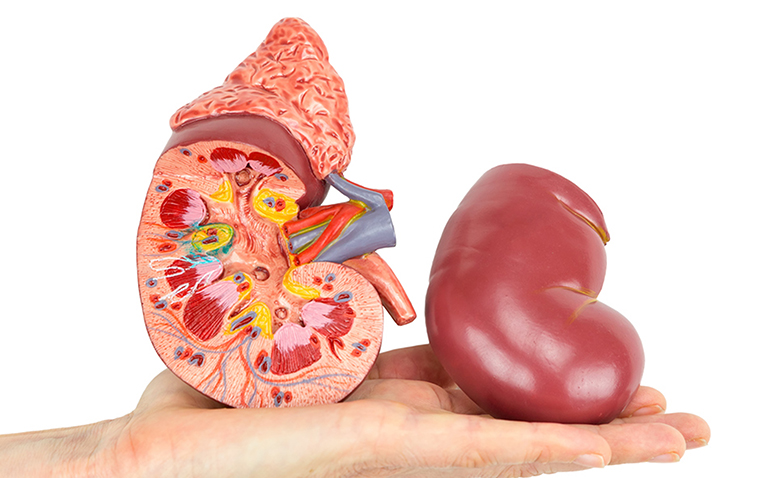
A few years ago, I noticed several dialysis centers popping up around Maryland and DC. It seemed like there was one on almost every other corner. The amount of dialysis centers in my area has become so alarming that one of my former co-workers spoke about it during a meeting, as we tried to think of ways to focus more on chronic disease prevention than intervention and treatment.
I remember hearing about all my grandmother went through when she was on dialysis because of diabetes, but I had no idea just how many other people were impacted by kidney disease, especially around the world.
The Global Impact of Kidney Disease
- Kidney disease is the 10th leading cause of death in the world.1
- Majority of kidney disease patients are treated in the United States, Italy, Japan, Germany, and Brazil.2
- Between 2005 – 2015, there was a 32% increase of the number of people who died from kidney disease.3
- Roughly 5 to 10 million people die annually from kidney disease.3
Globally, the focus has been on providing access to prevention and treatment methods. However, a lack of resources, poorly equipped health facilities, and a lack of access to healthcare makes it hard for some to receive prevention education, medication, and treatment.
In the U.S., 37 million people are estimated to have kidney disease and 9 in 10 adults with kidney disease do not know they have it.4
The Function of the Kidney
The kidneys are two bean-shaped organs that are located on either side of the spine, behind the stomach. 5 The function of the kidneys is to remove waste and fluid from the body through urine, create hormones for blood pressure and blood cells, and regulate water, salt, and mineral levels so that the nerves, muscles, and tissues can work properly.6

What is Chronic Kidney Disease?
Chronic Kidney Disease (CKD) occurs when the kidneys do not function as they should, and toxins and extra water build up in the body.
The buildup of toxins and water can lead to other chronic health conditions, one being cardiovascular disease. The impact of untreated CKD can lead to kidney failure, which would require a patient to undergo dialysis or a kidney transplant. This late stage of kidney disease is known as end-stage renal disease (ESRD).7
Prevention and Management
A healthy diet, exercise, sleep, stress management, smoking cessation, limiting alcohol, we hear these prevention methods repeatedly, and they are the same for majority of illnesses. They are also the same for kidney disease. Practicing prevention methods can delay or prevent the onset of most chronic diseases, but what happens if you have CKD?
You can live well with kidney disease. Making lifestyle changes can help you manage the disease and live a long and productive life.
Ten ways to manage kidney disease
- Control your blood pressure
- Meet your blood glucose goal if you have diabetes
- Work with your health care team to monitor your kidney health
- Take medicines as prescribed
- Work with a dietitian to develop a meal plan
- Make physical activity part of your routine
- Aim for a healthy weight
- Get enough sleep
- Stop smoking
- Find healthy ways to cope with stress and depression
Source: National Institute of Diabetes and Digestive and Kidney Diseases (2016).
Thinking back to my co-workers comments, I now understand her frustration. Dialysis can be helpful, but remember that prevention is key, and making healthier choices, little by little, can help you live a long, productive, and healthy life.
Make sure you speak with your healthcare provider about your health concerns.
Image from worldkidneyday.org
Resources:
National Institute of Diabetes and Digestive and Kidney Diseases
Sources:
World Health Organization. (2020). The top 10 causes of death. Retrieved from https://www.who.int/news-room/fact-sheets/detail/the-top-10-causes-of-death.
National Kidney Foundation. (2020). Global Facts: About Kidney Disease. Retrieved from https://www.kidney.org/kidneydisease/global-facts-about-kidney-disease.
World Health Organization. (2018). The global burden of kidney disease and the sustainable development goals. Retrieved from https://www.who.int/bulletin/volumes/96/6/17-206441/en/.
Centers for Disease Control and Prevention. (2019). Chronic Kidney Disease in the United States, 2019. Retrieved from https://www.cdc.gov/kidneydisease/publications-resources/2019-national-facts.html.
Hoffman, M. (2019). Pictures of the Kidneys. Retrieved from https://www.webmd.com/kidney-stones/picture-of-the-kidneys#1.
National Institute of Diabetes and Digestive and Kidney Diseases. (2020). Your Kidneys & How They Work. Retrieved from https://www.niddk.nih.gov/health-information/kidney-disease/kidneys-how-they-work.
Centers for Disease Control and Prevention. (2020). Chronic Kidney Disease Basics. Retrieved from https://www.cdc.gov/kidneydisease/basics.html#:~:text=If%20left%20untreated%2C%20CKD%20can,stage%20renal%20disease%20(ESRD).